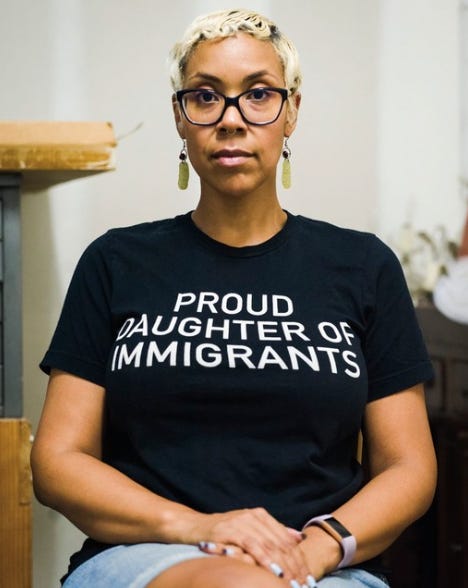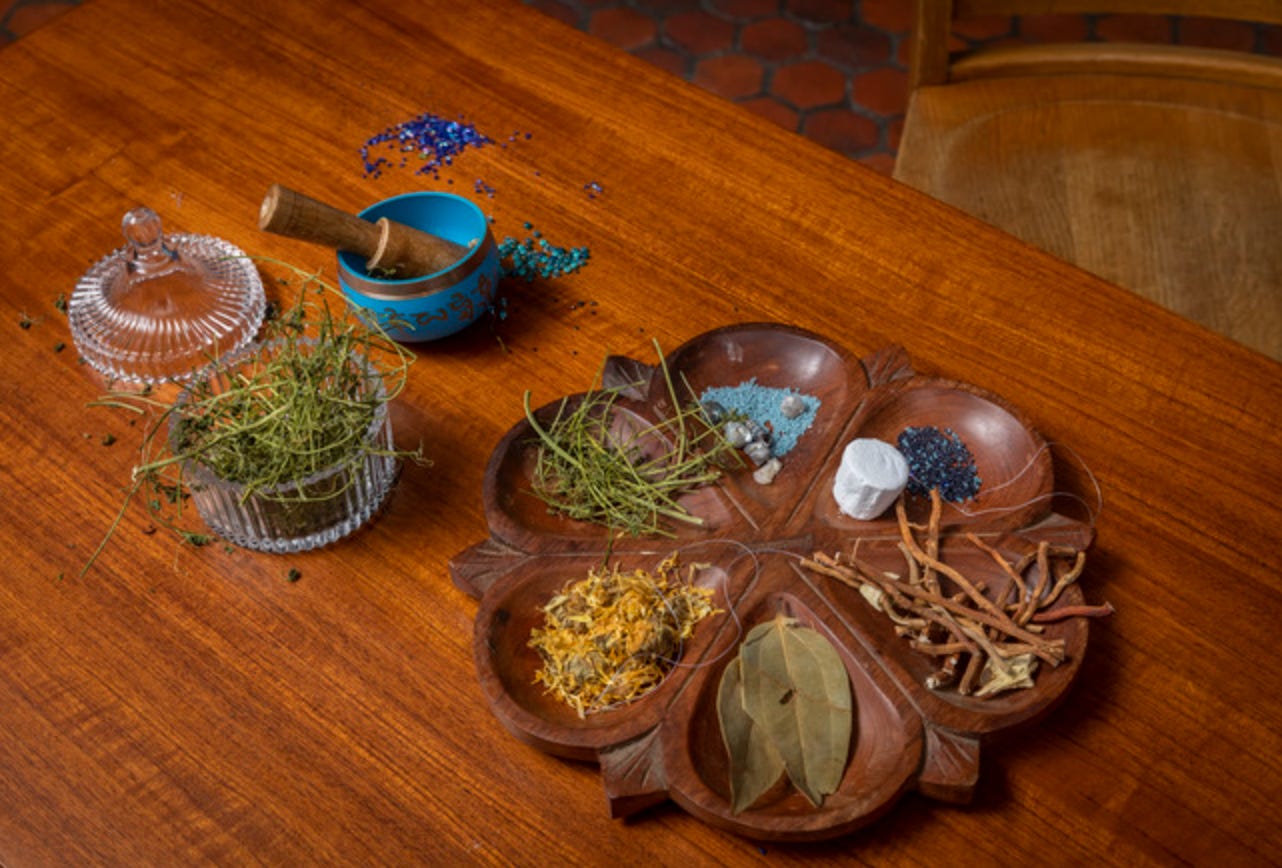Andrea Chung: On a Black Atlantis, normalizing art, and prioritizing family
Advice from an interdisciplinary artist
Meet our next creator, Andrea Chung:
Andrea Chung
Age: 44
Child: Kingston, 10
Location: San Diego
Vocation: Interdisciplinary artist
Instagram: @andreachungstudio
Current exhibition: if they put an iron circle around your neck I will bite it away
Andrea is an incredible mixed-media artist whose work is a direct descendant of her ancestors’ experiences. “I started off investigating my family and realized that a huge part of the dynamic in my family is heavily impacted by colonialism,” she said. “Everything from the relationships between women and men to a lot of familial trauma. I became really interested in how colonialism has psychologically impacted us as people.”
Andrea’s current exhibition, if they put an iron circle around your neck I will bite it away, looks at some of the ways women in particular were affected during colonialism. We know art is great when it changes how we look at something. And Andrea’s work, for me, took the concept of reproduction and turned my perspective of it on its head. I have often felt like being a woman and having a reproductive system—despite the beauty of it—is a vulnerability. Whether because of the fear of aggressive men, or the feeling that you’re at the whim of your medical provider and their beliefs, or the helplessness in the face of a governing body’s rulings. I have never associated my reproductive system with freedom.
But Andrea explained how enslaved women found a way to eke out a smidgen of power by harnessing some control over their reproductive systems. And that source of power came from midwives, a position that was historically revered—until the early 1900s when the American Medical Association (read: men) pushed women out of the birthing business for their own profit and domination. (Which is why we have a responsibility to provide reproductive education to all girls AND BOYS.)
If any readers are in or near Wisconsin, please go see Andrea’s work. I can only imagine how powerful it is in person. If you go, tell us about it!
Now, Andrea, in her own words…
On pulling from women’s experiences for art:
I have a show at the Kohler Arts Center in Sheboygan, Wisconsin. It’s inspired by this Detroit house techno group during the ’80s and ’90s called Drexciya. They were part of a larger collaborative group of rappers and activists in Detroit. They created this myth of Drexciya. It’s a Black Atlantis that’s populated by the children of enslaved women who threw their children off slave ships to avoid having them become enslaved or worse. The majority of young girls that were born, their future was to be raped or bred. I was thinking a lot about Beloved also. The main character, Sethe, escaped slavery, and she was about to be recaptured and she killed her daughter. Toni Morrison delved into how that psychologically impacted the mother and also how the child comes back as a ghost to haunt her.
I created this space where the children of Drexciya were thrown off and the midwives are “catching babies,” which is also midwife-speak for delivering a baby. I cast all these arms that are underwater and outstretched toward the sky to catch the babies being thrown into the water.
Midwives were very powerful figures. They provided medicinal cures for a lot of the enslaved people who were hurt. They also provided abortions for enslaved women and the white wives of slave masters. It’s a powerful thing because their reproductive system was really the only thing that they had control of to an extent. They could decide to take this, and they could protect themselves from getting pregnant. And it’s really revolutionary and powerful.
On normalizing art for children:
I never went to a museum until I was in college. My parents didn’t nurture me being an artist so I introduced it to my son, but I don’t force it on him. Because I don’t want to tell him what to be. I just want him to know that this is an option. Because I’ve alway been told from my parents that I need to get a real job, that I need something to fall back on. And I understand that they want me to have stability and that they see being an artist as a luxury. My parents grew up really poor, and the idea that I’m going to make art as a living is ridiculous to them.
We have normalized art for my son. The majority of our friends are artists or creative in some kind of way. It’s not unusual for him. For example, when he was three I took him to an Ernesto Neto exhibit at the contemporary museum here. It’s a sensory experience, where Neto takes these spices and suspends them from the ceiling. So you can smell everything. And my son kicked one! I was horrified. I was so embarrassed, but the director was cracking up. She said, It’s okay, they’ve been stretching anyway. It was close to the end of the exhibition.

On prioritizing family over art:
There’s a lack of respect in the art world for women wanting to physically be with their child. After my son was born, and I had postpartum depression, I took my son to a residency with me. All my family came through to support me. My husband was there for a bit, my mom came for the duration, my mother-in-law came, everyone supported me. The residency supported me. Except for this one curator, who called my kid a distraction. And that was like a kick in the gut. Is that how you see my child? I’m not a machine. And I think people forget that it’s a real person making the work.
Last year I had to turn down a lot of things because my son was being bullied at school and my husband’s dealing with an autoimmune thing, and I had to tell people no, and people were getting angry at me. And I was just like, You’re not my priority. My family is my first priority. And that does not seem to compute. And I’m kind of amazed that’s still the attitude. And some of it was from women. And it’s kind of surprising, but I guess I shouldn’t be too surprised anymore by the art world.
I love what I do, but I don’t want to be an art store. My goal is to take care of my kid, make sure he goes off to college and does what he wants to do, and just raise a good human being.
Thank you, Andrea, for sharing your story!
*Interview has been edited for length and clarity.







